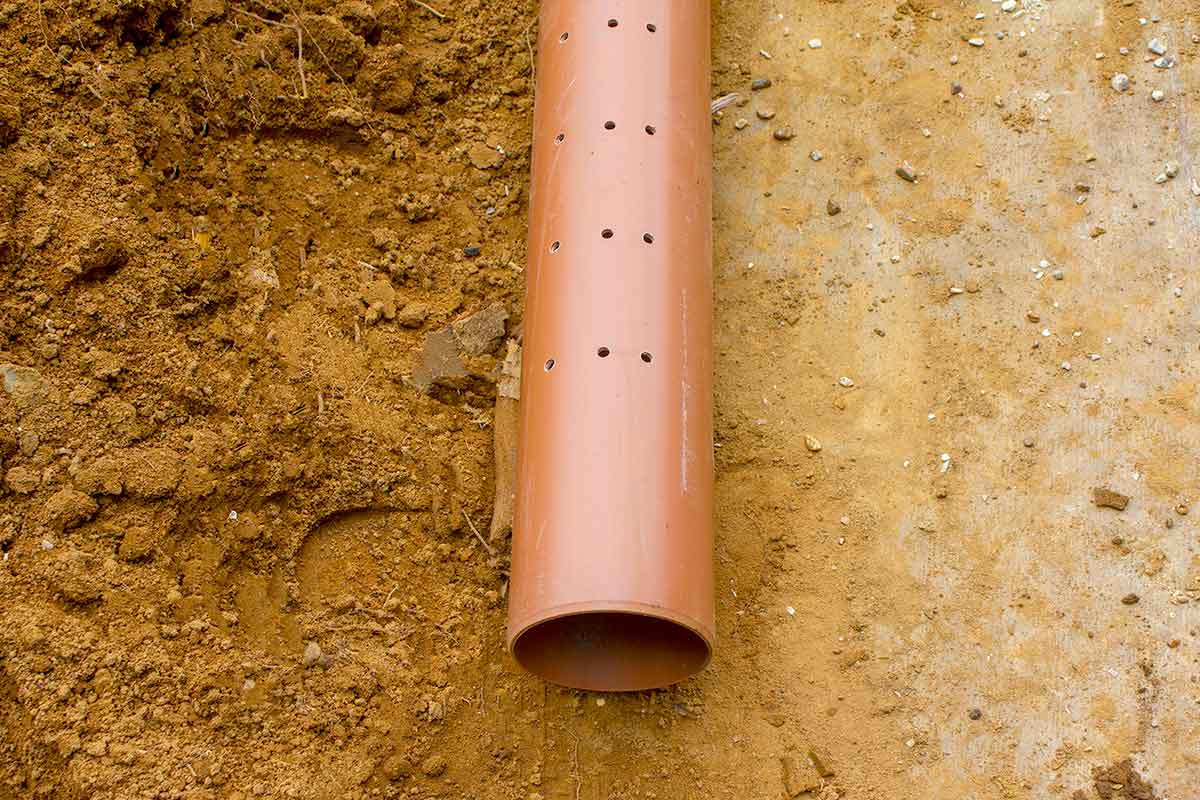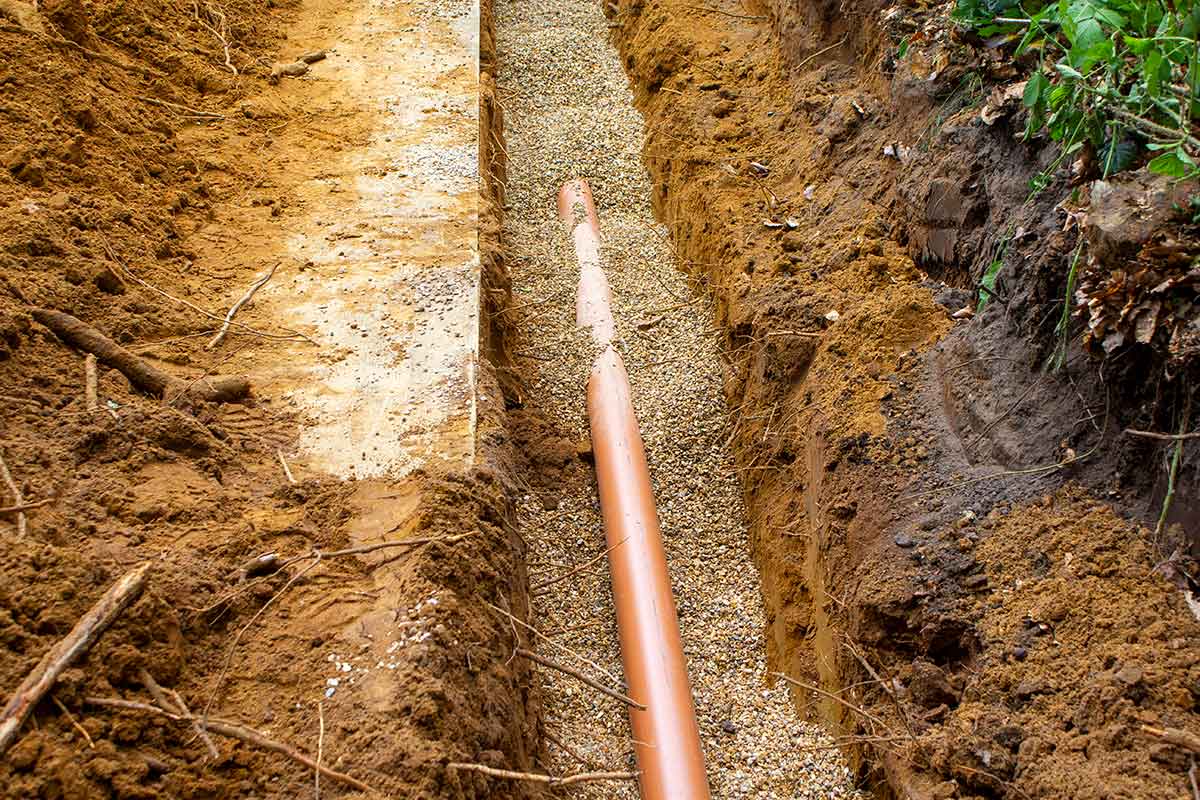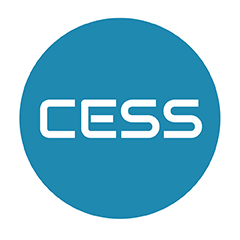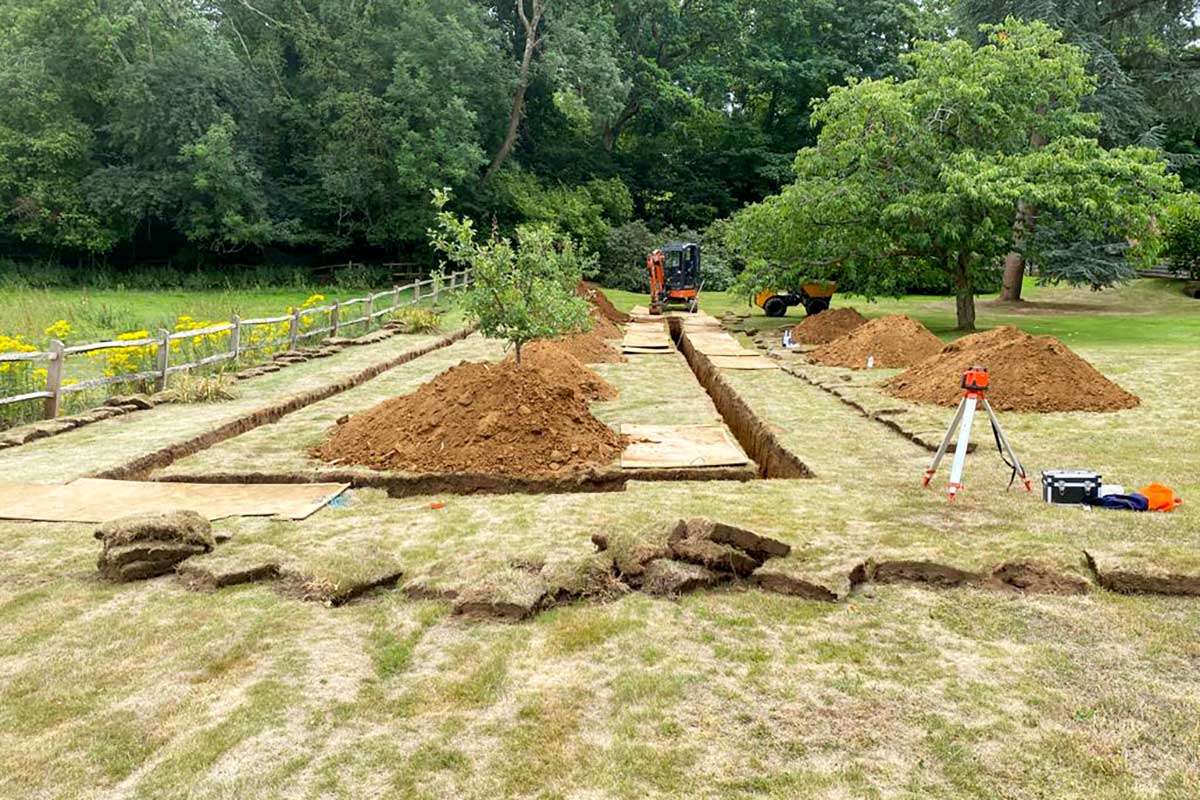Drainage fields are a vital part of most off-mains sewage systems. With environmental issues front and centre, any individual responsible for off-mains sewage must understand both how a drain field works and the importance of installing one to the correct standards.
In this article, we’ll explain how a drainage field works, the difference between soakaways and drain fields, and the various laws and regulations to look out for.
What’s the purpose of a drain field?
Put simply, a drainage field has two main jobs. The first is to release treated or semi-treated wastewater into the ground in a controlled manner. The second is to allow semi-treated wastewater to be treated further before it reaches the ground. Both are essential steps in meeting UK environmental rules around the disbursal of wastewater.

Drain fields have a unique design that puts cleanliness first. It consists of a grid of perforated pipes laid out in trenches filled with drainage shingle. The pipes receive a steady flow of wastewater from the sewage treatment plant or septic tank. Small holes allow effluence to filter out into the trenches, where the drainage shingle then acts as a second filter. This process results in a cleaned water effluence that soaks slowly and safely into the ground.

Is a soakaway the same as a drain field?
No. It’s a common mistake to confuse these two systems, which differ greatly in both design and treatment capabilities. A soakaway deals only with surface water and run-off from areas such as roofs, patios and driveways. It usually consists of a crude hole or structure filled with stone, with no ability to treat the wastewater.
In fact, the term “septic tank soakaway” is itself a misnomer. Due to UK environmental laws, only a drain field or a reed bed can be used to disburse water into the ground from a septic tank. A soakaway should never be used to drain effluent into the ground – unless you want to risk a large fine.
Complying with BS 6297:2007 regulations
All off-mains sewage systems must comply with UK environmental laws and building regulations. Septic tank drainage fields are specifically covered by BS 6297:2007, the British standard for the design and installation of drainage fields. Anyone who uses, or plans to use, a drainage field is legally required to ensure their system meets this standard.
Aside from this, there are further rules that dictate whether you are legally permitted to install a drainage system on your property. The three tests your property must pass are:
- Not in a Groundwater Source Protection Zone – if the Environment Agency deems that your site sits in this zone, you won’t be allowed to install a drain field system. Use this map to check whether your property is affected (click Designations → Land Based Designations → Non-Statutory → Source Protection Zones).
- Trial Site Assessment Hole (TSAH) – If the bedrock or water table is within 1 metre of the bottom of the planned pipes, a drainage field cannot generally be installed.
- Percolation Test – This is to check that the water doesn’t soak away too fast or slowly in the soil directly under the drainage shingle. Heavy clay soils will prevent adequate drainage, but other types of soil can be problematic.
CESS are drain field and sewage treatment plant specialists
The best guarantee of installing a legal, efficient drain field is to use experienced professionals. CESS has 30 years’ experience of installing drainage fields and soakaways that meet UK environmental and building regulations. Get in touch today we would be delighted to help with your drainage field installation.

